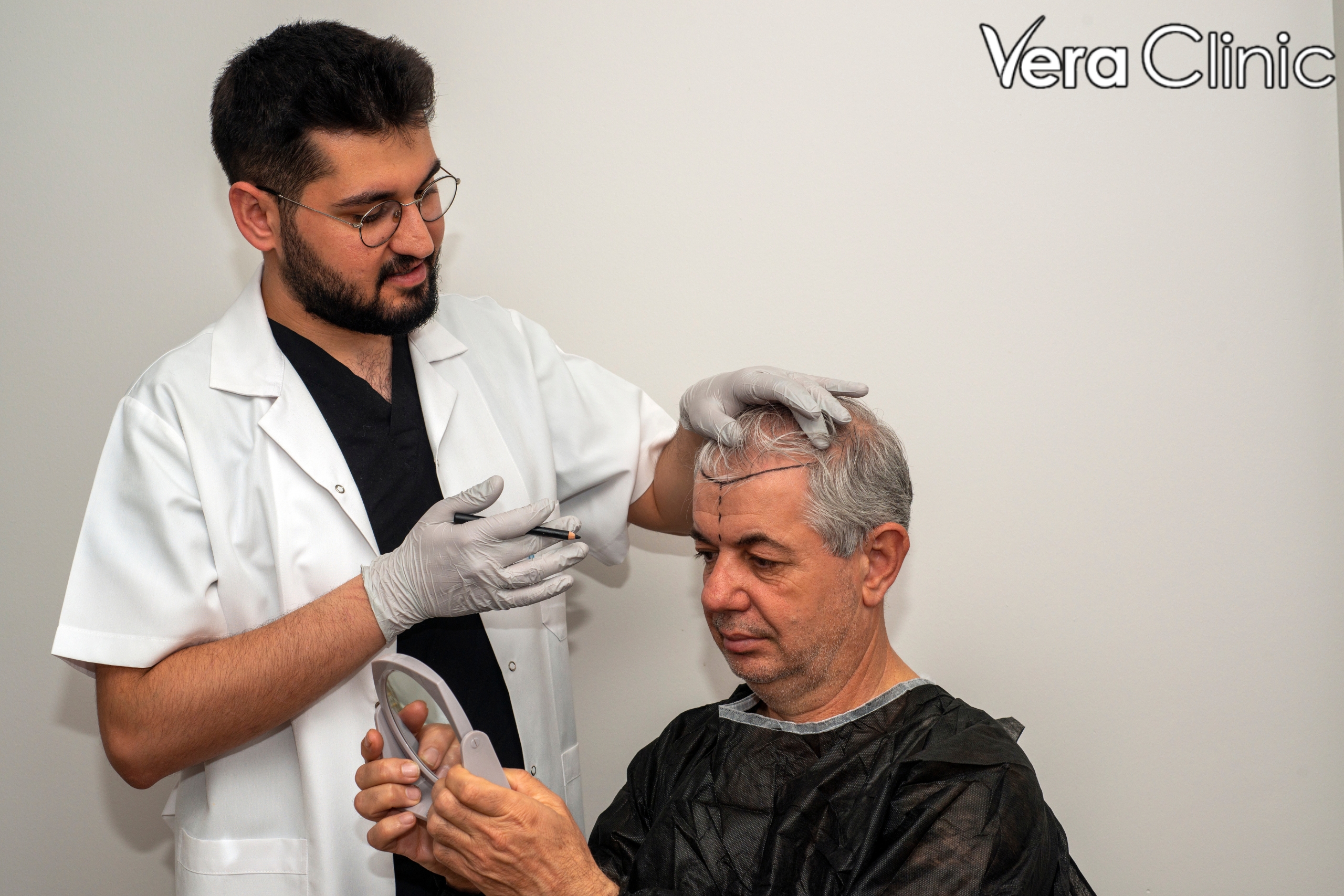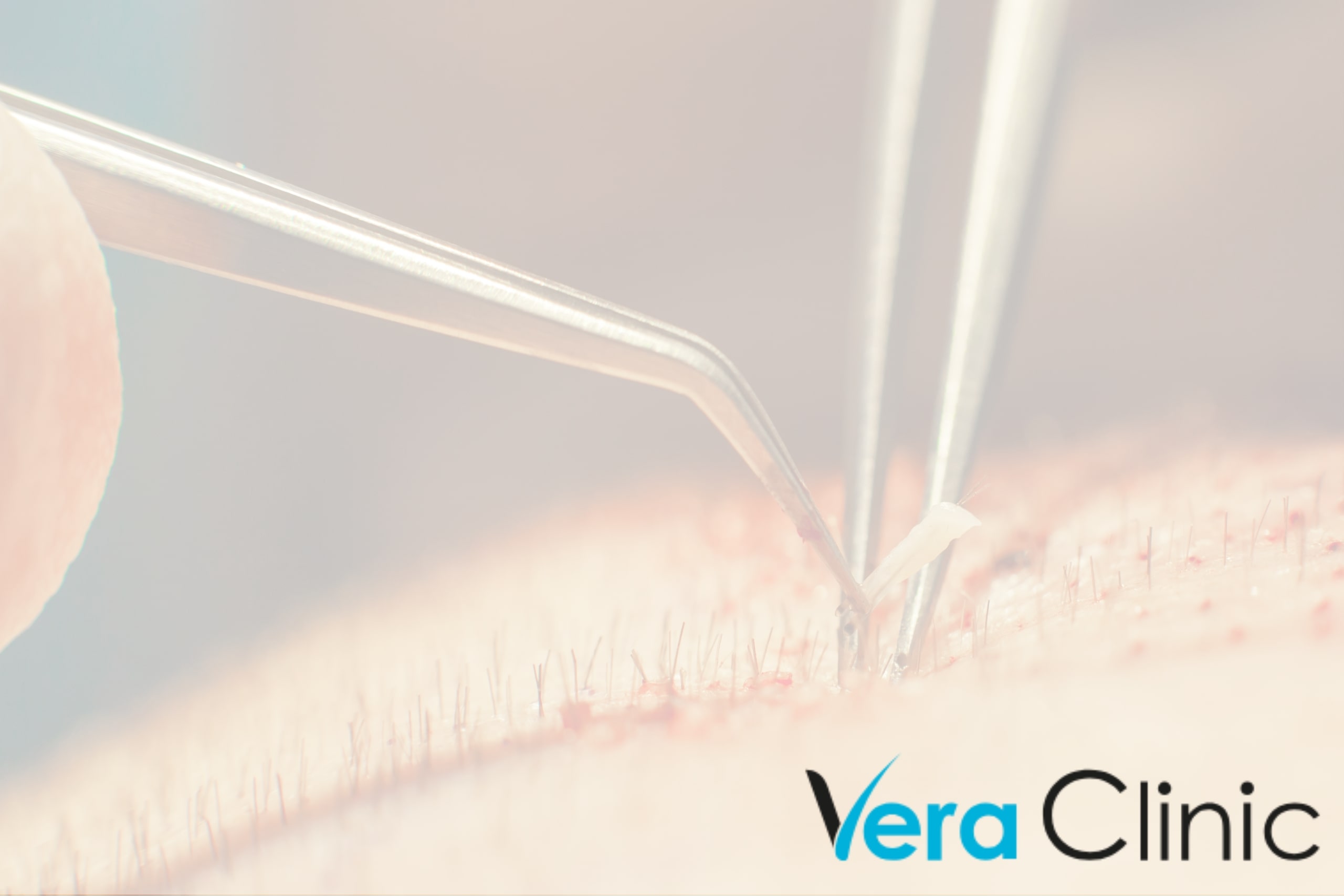Hair loss is a common concern for many individuals, leading them to seek out solutions such as hair transplants. But what exactly is a hair graft and how can it help restore your hairline? For those considering this procedure, understanding the basics is key to making an informed decision.
Hair grafting, especially in countries like Turkey, has become a popular option for those looking to address their hair loss concerns. This procedure involves transferring hair follicles from one part of the scalp to another to promote new hair growth. With advancements in technology and techniques, hair grafting has become a viable option for many individuals seeking to regain their confidence and youthful appearance.
Understanding Hair Grafts
A hair graft refers to a strip or cluster of hair follicles that are used in hair transplant procedures to restore hair growth in areas affected by hair loss or thinning. These grafts are usually harvested from areas of the scalp where hair is more abundant, such as the back or sides.
The process of using hair grafts in hair transplant procedures involves a few key steps. Firstly, the surgeon will carefully extract the hair grafts, ensuring minimal damage to the follicles. This is typically done by either taking a strip of scalp and dividing it into smaller grafts (known as follicular unit transplantation) or individually extracting each follicular unit (known as follicular unit extraction).
Once the hair grafts have been harvested, they are meticulously transplanted into the recipient area. This involves creating small incisions or recipient sites in the target area and placing the grafts into these sites. The surgeon pays careful attention to the direction, angle, and density of the transplanted hair to ensure natural-looking results.
Over time, the transplanted hair grafts will shed their existing hair shafts and enter a resting phase. However, new hair growth will gradually occur from the transplanted follicles, resulting in increased hair density and coverage in the treated area. It is important to note that hair grafts are typically a permanent solution, as they are resistant to the hormone responsible for causing hair loss.
Types of Hair Grafts Turkey
Turkey is renowned for its advanced and high-quality hair transplant techniques. In hair transplantation procedures, different types of hair grafts are used, such as Follicular Unit Transplantation (FUT), Follicular Unit Extraction (FUE), and Direct Hair Implantation (DHI).
Follicular Unit Transplantation (FUT) involves the extraction of a strip of skin from the donor area, usually the back of the scalp, which is then dissected into individual hair follicles under a microscope. These follicles, or grafts, are then transplanted into the recipient area where hair loss has occurred. FUT is a commonly used technique that offers excellent results with less scarring.
Follicular Unit Extraction (FUE) is another popular hair grafting technique, particularly favored for its minimally invasive nature. Unlike FUT, FUE involves the extraction of individual hair follicles directly from the donor area, using a specially designed punch tool. Each hair graft is then transplanted into the recipient area, creating a natural and full-looking head of hair.
Direct Hair Implantation (DHI) is a relatively new hair transplantation technique that combines the advantages of FUE and FUT. In DHI, hair grafts are extracted individually using a microscopic technique similar to FUE. However, instead of creating incisions first and then implanting the grafts, DHI involves simultaneously extracting and implanting each hair follicle using a specialized pen-like device. This ensures a faster procedure and higher graft survival rate.
The Process of Hair Grafting
Hair grafting, also known as hair transplantation, is a surgical procedure that involves the removal of hair from one part of the body, typically the back or sides of the scalp, and the transplantation of these hair follicles onto areas of the scalp where hair is thinning or balding. This procedure aims to restore hair growth in areas of alopecia or hair loss.
The process of hair grafting begins with a consultation with a qualified surgeon, who will assess the patient’s hair loss condition and determine the suitable donor area for hair extraction. Once the donor area is identified, local anesthesia is administered to ensure a pain-free procedure.
Using a strip harvesting technique or follicular unit extraction (FUE), the surgeon carefully collects hair follicles from the donor site. The harvested follicles are then meticulously dissected into individual grafts, each containing one to four hair follicles.
After extraction, small incisions are made in the recipient area, which is the bald or thinning area of the scalp. The surgeon then skillfully places the hair grafts into these incisions, ensuring a natural-looking hairline and proper angulation.
The procedure can take several hours, depending on the number of grafts needed. Patients may experience some mild discomfort during the healing process, but this can be managed with pain medication and proper care.
Over time, the transplanted hair grafts enter a resting phase before regrowing, with visible results typically seen within three to six months. Full hair growth can take up to a year, but once the transplanted hair follicles are established, they will continue to grow naturally like the rest of the hair on the scalp.
Hair grafting is an effective solution for individuals seeking to restore hair density and combat hair loss. With advancements in techniques and technology, this procedure offers a long-term, natural-looking solution for hair restoration.
Choosing the Right Hair Graft Technique
When considering hair transplantation, choosing the right hair graft technique is crucial for achieving optimal results. The three most commonly used techniques are Follicular Unit Transplantation (FUT), Follicular Unit Extraction (FUE), and Direct Hair Implantation (DHI). Understanding the factors to consider when selecting between these techniques is essential.
FUT involves removing a thin strip of hair-bearing scalp from the donor area and dissecting it into individual grafts. This technique is suitable for individuals requiring a large number of grafts and can provide excellent yield. However, it leaves a linear scar at the donor site, making it less favorable for individuals who prefer to keep their hair short.
FUE involves extracting individual follicular units directly from the donor area using a small punch device. It offers the advantage of minimal scarring as the extraction sites heal with small dot-like scars. FUE is ideal for individuals who wish to keep their hair short and do not require a large number of grafts. However, it can be time-consuming due to the individual extraction process.
DHI is a modified FUE technique where hair follicles are directly implanted using a specialized tool called a Choi pen. This technique offers minimal handling of grafts and allows precise control over the direction and angle of each hair follicle. DHI is an excellent choice for individuals who desire maximum control over their hairline design and density.
Key factors to consider when choosing between these techniques include the desired number of grafts, preference for short hair length, desire for minimal scarring, and the importance of hairline design control. Consulting with a qualified hair transplant surgeon is vital to determine the most suitable technique based on individual needs and expectations.
Who Is A Candidate for Hair Grafting?
Hair grafting, also known as hair transplantation, is a popular surgical procedure for restoring hair growth in individuals experiencing baldness or significant hair loss. Before considering hair grafting, it is crucial to determine if one is a suitable candidate for the procedure.
The most important qualification for undergoing a hair graft procedure is having sufficient donor hair that can be extracted from the scalp. The donor hair is usually taken from the back or sides of the head, where hair growth is typically stable and resistant to balding. The quantity and quality of the donor hair play a crucial role in determining the success of the grafting procedure.
Another qualification is the overall health of the individual. It is essential to undergo a comprehensive health evaluation to ensure that there are no underlying medical conditions that may interfere with the healing process. Individuals with uncontrolled diabetes, blood clotting disorders, or autoimmune diseases may not be suitable candidates for hair grafting.
Further, the age of the candidate is an important consideration. Hair grafting is most effective for individuals who have stable hair loss patterns. It is typically not recommended for individuals in their early twenties, as their hair loss pattern may not stabilize until later in life.
Overall, the best candidates for hair grafting are those with stable donor areas, good overall health, and realistic expectations regarding the outcome of the procedure. Consulting with a qualified hair transplant specialist is the first step in determining if hair grafting is the right option for hair restoration.
How Long Do Hair Grafts Last?
Hair grafts, also known as hair transplants, have become an increasingly popular solution for individuals experiencing hair loss or thinning. Understanding the longevity of hair grafts is important for those considering this procedure. On average, hair grafts can last a lifetime.
The success and lifespan of hair grafts depend on various factors. Firstly, the method used to extract and implant the hair follicles plays a crucial role. There are two commonly used techniques: follicular unit extraction (FUE) and strip harvesting. FUE involves extracting individual hair follicles, resulting in less scarring and quicker healing time compared to strip harvesting. Consequently, hair grafts obtained through FUE tend to have a longer lifespan.
Additionally, the surgeon’s skill and experience significantly impact the longevity of hair grafts. An experienced and skilled surgeon is likely to harvest and implant the hair follicles more effectively, increasing their overall survival rate. Adequate post-operative care, such as protecting the grafts from sunlight, also plays a vital role in their lifespan.
Furthermore, patient characteristics and lifestyle factors can influence the longevity of hair grafts. For instance, individuals with a stable donor area, where the hair follicles are taken from, tend to experience better outcomes. On the other hand, patients who smoke or have certain medical conditions may have reduced graft survival rates.
How Many Hairs Does 1 Graft Have?
A hair graft is a unit of hair transplantation that is commonly used in hair restoration procedures. It is important to understand the number of hairs typically found in a single hair graft in order to achieve desired results.
On average, a hair graft contains about 1 to 4 hairs. However, the number of hairs within a graft can vary depending on the patient’s hair characteristics and the specific technique used by the surgeon. In some cases, a graft can even have up to 5 or 6 hairs.
The quantity of hairs in a graft is crucial because it determines the density and natural appearance of the transplanted hair. Surgeons carefully select and place grafts with the appropriate number of hairs to mimic the patient’s natural hair growth pattern.
During the hair transplant procedure, grafts are taken from the donor area, usually the back or sides of the head, where hair growth is typically dense. The surgeon then meticulously places these grafts into the recipient area, where hair loss or thinning has occurred.
Understanding the number of hairs in a graft is essential for both the surgeon and the patient. It allows the surgeon to plan the procedure effectively and provide the patient with realistic expectations regarding the final outcome. Additionally, it helps the patient understand the number of grafts required to achieve the desired density and coverage.
How Painful is Hair Grafting?
Hair grafting or hair transplantation is a surgical procedure that involves the removal of hair follicles from one part of the body, usually the back or sides of the head, and the planting of these follicles onto bald or thinning areas of the scalp. One of the common concerns among individuals considering hair grafting is the level of discomfort associated with the procedure.
Fortunately, hair grafting is generally a well-tolerated and minimally painful procedure. Local anesthesia is administered to numb the scalp before the surgery, which significantly reduces any potential pain or discomfort that may be experienced during the procedure. This ensures that the patient remains comfortable throughout the surgical process.
Some patients may report mild discomfort or a sensation of pressure during the administration of the anesthesia or the extraction and transplantation of the hair follicles. However, this is usually well managed with medications and topical anesthetics that are applied to the scalp. The discomfort experienced during hair grafting is typically short-lived and diminishes quickly after the procedure.
It is important to note that individual pain tolerance may vary, and some patients may experience more discomfort than others. However, the majority of patients find hair grafting to be a relatively painless procedure. The benefits of hair grafting in terms of restoring natural hair growth and improving self-confidence often outweigh any temporary discomfort associated with the procedure.
Is Hair Grafting Turkey Expensive?
Hair grafting in Turkey is a popular and cost-effective option for individuals suffering from hair loss. Compared to other countries, undergoing a hair graft procedure in Turkey can be considerably less expensive. The cost considerations for this procedure in Turkey depend on various factors.
Firstly, the extent of hair loss and the number of grafts required will significantly impact the overall cost. Generally, the more grafts that are needed, the higher the cost of the procedure. Hair grafting clinics in Turkey often offer competitive package deals that include accommodation, transportation, and the procedure itself. This can help to reduce costs and make the treatment more accessible to individuals from all walks of life.
In addition, the level of expertise and experience of the hair transplant surgeon will play a role in the cost. Clinics in Turkey are renowned for their experienced surgeons who have performed numerous successful hair graft procedures. Despite the expertise, the cost of hair grafting in Turkey remains more affordable compared to other countries due to lower operating costs and a lower cost of living.
It is important to note that while the cost of undergoing hair grafting in Turkey may be significantly lower than in other countries, it is crucial to prioritize the qualifications and reputation of the clinic and surgeon. Researching and choosing a reputable clinic will ensure a safe and successful procedure.

Conclusion
In conclusion, hair grafting plays a crucial role in hair transplant surgery, particularly in popular destinations such as Turkey. This process involves the careful extraction of healthy hair follicles from donor areas and implanting them into areas experiencing hair loss or thinning. Hair grafting allows surgeons to recreate a natural-looking hairline and restore density to balding areas, ultimately giving patients renewed confidence and improved self-esteem. It is important to choose reputable clinics in hair graft Turkey, where expert surgeons utilize advanced techniques to ensure successful outcomes. With their expertise, patients can achieve long-lasting, natural results that seamlessly blend with their existing hair. Overall, hair grafting serves as a transformative solution for those suffering from hair loss, helping them regain a full head of hair and a sense of normalcy in their lives.




